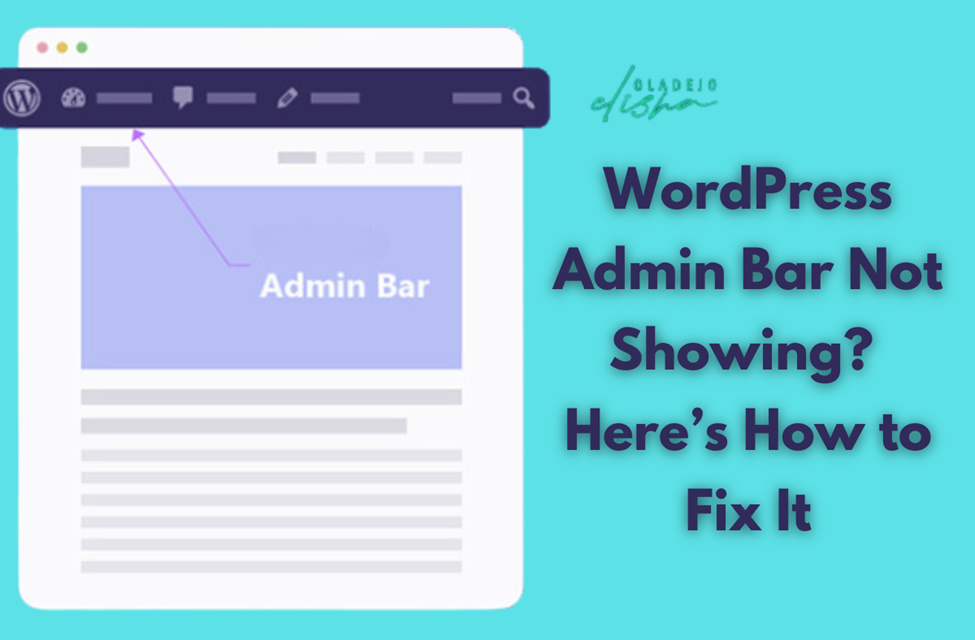Welcome to The Ultimate Guide: 101 Ecommerce SEO Tips, your one-stop shop for all things related to skyrocketing your online store’s visibility in the mystical world of search engines.
Let’s face it: e-commerce SEO can sometimes feel like trying to solve a Rubik’s Cube in the dark. But fear not, because I’ve been there, done that, and am here to light the way with some game-changing strategies.
In this post, I’m not just throwing 101 ecommerce SEO tips at you and hoping something sticks. No, I’m handing over a well-crafted ecommerce SEO strategy, a treasure map if you will, which transformed my humble online store into a search engine darling.
From the nitty-gritty of keyword research to the fine art of optimizing those crucial category pages, we’re covering it all.
So, grab a coffee, get comfy, and let’s dive into the world where SEO is less of a headache and more of an exciting adventure.
Let’s embark on this journey together as I split these tips into segments for better understanding.
Segment 1: Website Structure and Design

When it comes to ecommerce search engine optimization, the structure and design of your website play a monumental role. Not only do they impact how search engines like Google perceive and rank your site, but they also shape the user experience, which is equally crucial.
A well-structured ecommerce website can mean the difference between a customer who stays, browses, and buys, and one who leaves out of frustration.
Here are tips to optimize your site’s architecture for both better user experience and enhanced performance in search engine results pages:
- Logical Site Structure: Create a clear, hierarchical structure that organizes your content effectively. This should reflect in your navigation menus, with category pages being easily accessible.
- User-Friendly URLs: Ensure that your URLs are clean and descriptive. They should include relevant keywords and be easy for both users and search engines to understand.
- Responsive Design: With the rise of mobile browsing, having a responsive design is non-negotiable. Your ecommerce site should look and function well on all devices.
- Fast Loading Speeds: A slow site can deter customers and harm your rankings. Optimize images, leverage browser caching, and consider a content delivery network to speed things up.
- Intuitive Navigation: Your navigation should be straightforward and predictable. Users should find what they’re looking for with minimal clicks.
- Effective Use of Headers: Utilize header tags (H1, H2, H3) to structure your content clearly. This helps search engines understand the hierarchy and relevance of your content.
- Optimized Category Pages: Category pages are not just for organizing your products. They also offer great opportunities for including keywords and enhancing SEO.
- Keyword-Rich Content: From product descriptions to blog posts, ensure your content includes relevant keywords identified through thorough ecommerce keyword research.
- Quality Internal Linking: Use internal links wisely to guide visitors to related products or content, helping search engines crawl your site more effectively.
- Optimized Images: Ensure your images are high-quality yet compressed for the web. Don’t forget to use descriptive alt tags with relevant keywords.
- Robust Search Functionality: A good search feature can enhance user experience significantly, helping users find exactly what they’re looking for on your site.
- Technical SEO Elements: Pay attention to technical SEO aspects like structured data, XML sitemaps, and canonical tags to improve how search engines index your site.
- Security Features: Implement SSL (Secure Sockets Layer) to secure your site. A secure site not only protects user data but also improves trust and rankings.
- Regular Audits and Updates: Regularly audit your website for broken links, outdated content, and SEO opportunities. Keeping your site fresh and updated is key to maintaining good rankings.
- Strategic Link Building: Develop a link-building strategy that earns high-quality backlinks to your site, which can significantly improve your site’s authority and ranking in search engine results.
By focusing on these areas, you can ensure that your ecommerce site not only appeals to search engines but also provides a smooth and enjoyable shopping experience for your customers.
Remember, the goal is to build a site that effortlessly guides visitors from the landing page to checkout, all while maximizing your visibility in search engine results.
Segment 2: Keyword Research and Content Strategy

Embarking on the journey of keyword research and content strategy in the realm of ecommerce SEO is like unlocking a treasure trove of opportunities for your online store. It’s not just about finding the right words; it’s about understanding your audience, what they are searching for, and how they are searching for it.
The following tips have been instrumental in my own ecommerce journey, focusing on effective keyword research tailored specifically for e-commerce and the art of weaving these keywords into your product descriptions and blog content.
- Utilize Google Search Console: Start by exploring Google Search Console to identify which keywords already bring traffic to your site. This tool is invaluable for understanding your current SEO performance.
- Long-Tail Keywords: Focus on long-tail keywords. These are less competitive and more specific, often leading to higher conversion rates as they match closely with search intent.
- Understand Search Intent: Pay close attention to search intent. Keywords aren’t just words; they represent the needs and desires of your potential customers.
- Commercial Intent Keywords: Prioritize commercial intent keywords for product pages. These are terms used by people ready to buy, such as buy, deal, or discount.
- Competitor Analysis: Analyze your competitors’ keyword strategies. Tools like Ahrefs or SEMrush can provide insights into the keywords your competitors rank for.
- Keyword Relevance: Ensure the keywords are relevant to your product or content. Irrelevant keywords can lead to high bounce rates and lower rankings.
- Integration in Product Descriptions: Seamlessly integrate keywords into your product descriptions. This improves SEO while maintaining a natural flow and readability.
- Don’t Leave Out LSI: Leverage the Latent Semantic Indexing (LSI) Keyword Generator to enrich your pages with semantically related keywords. This strategy broadens your reach, allowing your content to rank for a wider range of search terms and enhancing the overall context of your pages.
- Blog Content Strategy: Develop a blog content strategy that aligns with your keyword research. Blogs are a great way to target informational keywords and drive traffic to your ecommerce site.
- Use Synonyms and Related Terms: Avoid keyword stuffing by using synonyms and related terms, which can also help your pages rank for a broader range of search queries.
- User-Generated Content: Encourage user-generated content like reviews or Q&As on product pages, which can naturally include diverse keyword variations.
- Meta Descriptions: Craft compelling meta descriptions with keywords. Though they don’t directly impact rankings, they influence click-through rates from search engine results pages.
- Optimize for Other Search Engines: Don’t just focus on Google. Optimize for other search engines that your target audience might use.
- Keyword in URLs: Include keywords in your URLs where possible, as this can help search engines understand what your page is about.
- Voice Search Optimization: Consider how voice search might alter the keywords you choose. Voice searches tend to be longer and more conversational.
- Local SEO for Ecommerce Stores: If you have a physical presence, optimize for local SEO by including location-based keywords.
- Seasonal Keywords: Leverage seasonal keywords for holiday promotions or seasonal products.
- Keyword Difficulty: Use keyword difficulty scores to identify which keywords might be easier to rank for.
- Analyze Search Trends: Keep an eye on search trends using tools like Google Trends to stay ahead of market shifts and interests.
- Regularly Update Keyword Strategy: SEO is not a set-it-and-forget-it strategy. Regularly review and update your keywords to align with changes in search behavior and market dynamics.
By following these tips, you’ll be able to craft a robust keyword research and content strategy that not only enhances your ecommerce website’s visibility on search engines but also resonates with your audience, driving both traffic and sales.
Remember, keywords are the compass that guides your ecommerce SEO efforts, and integrating them effectively into your site is crucial for success in the digital
Segment 3: On-Page SEO for E-commerce

On-page SEO is the heart of any ecommerce website, acting like the gears in a finely-tuned machine to boost your presence in search engine result pages. It’s not just about making your site look good; it’s about making it work effectively for both users and search engines.
Here are tips for on-page SEO for e-commerce:
- Optimize Product Titles: Use targeted keywords that accurately describe your product, enhancing search engine rankings and user clarity.
- Summarize page content with focus keywords to improve click-through rates from search engine result pages.
- Use High-Quality Images: Clear, optimized images improve user experience and can be tagged with keywords for search engine discovery.
- Focus on specific, low competitive keywords: Target specific, less competitive keywords in content to attract a more targeted audience to your product pages.
- Improve Site Load Speed: Faster web pages retain users better and are favored by search engines, enhancing overall site rankings.
- Responsive Web Design: Ensure your site is mobile-friendly, as most users shop on mobile devices, improving user experience.
- Utilize Internal Linking: Link to other relevant content on your site to keep users engaged and distribute page authority.
- Optimize URL Structure: Create clear, keyword-rich URLs that are easily understandable by both users and search engines.
- Implement Structured Data: Use schema markup to provide search engines with well detailed information about your site’s content.
- Engage in Content Marketing: Regularly update your blog to provide fresh content, using keywords to attract organic traffic.
- Optimize Category Pages: Use keywords and clear structure in category pages for better navigation and search engine indexing.
- Use Alt Text for Images: Describe images with relevant keywords to improve accessibility and search engine visibility.
- Improve Page Readability: Ensure content is easy to read and engaging, keeping visitors on your page longer.
- Update Outdated Content: Regularly refresh old pages with updated information and keywords to maintain relevancy and rankings.
- Monitor Technical SEO: Regularly check for and fix crawl errors, broken links, and other technical issues that hinder SEO performance.
Each of these tips is a step towards crafting an ecommerce site that not only ranks well in search engines but also provides an exceptional experience for every visitor.
Remember, effective on-page SEO is about creating a harmonious balance between technical optimization and user-friendly content. Implementing these strategies will set your ecommerce site on the path to heightened visibility and success.
Segment 4: User Experience and Engagement

The intersection of user experience and engagement with SEO is a bustling crossroad in the world of ecommerce. When users enjoy and engage with your site, search engines take notice, often rewarding you with a better position on the search engine results page.
Here are comprehensive tips to enhance both user engagement and your SEO strategy for your ecommerce store:
- Turn off your 404 error pages to improve user experience and drive sales and engagement.
- Responsive Website Design: A mobile-friendly site ensures a seamless experience across devices, crucial for capturing the growing mobile user base and boosting organic traffic.
- Intuitive Navigation: Simplify your site structure with clear menus and logical paths to important sections like product and category pages, enhancing findability and engagement.
- High-Quality Product Images and Videos: Use appealing visuals to grab attention, provide value, and encourage longer page visits, indirectly influencing your SEO performance.
- Engaging Product Descriptions: Craft unique, keyword-rich product descriptions that not only inform but also entertain, increasing time spent on product pages.
- Effective Use of Internal Links: Strategically link to relevant blog posts or product pages within your content to keep users exploring your site, boosting dwell time.
- Regularly Update Content: Keep your content fresh and relevant, be it blog posts or category pages, to engage repeat visitors and provide new keyword ideas.
- Leverage User Reviews and Testimonials: Showcase customer feedback on product pages to build trust and encourage longer visits, which can positively impact search rankings.
- Interactive Elements: Implement quizzes, calculators, or interactive guides that engage users actively, making them spend more time on your site.
- Personalization Strategies: Use data-driven insights to personalize user experiences, from product recommendations to tailored content, fostering a sense of connection and loyalty.
By integrating these tips into your ecommerce SEO strategy, you not only enhance the user experience but also pave the way for more organic traffic and higher rankings.
Remember, a happy visitor often results in a happy search engine, and the synergy between user engagement and SEO is a potent formula for the success of your ecommerce site.
Segment 5: Technical SEO

In the intricate tapestry of ecommerce SEO, technical SEO is the strong, silent type that holds everything together.
It’s the foundation that supports your online store’s visibility in organic search. From boosting site speed to ensuring mobile optimization, technical SEO is crucial for attracting more organic traffic.
Here are tips to strengthen technical SEO foundation:
- Optimize Images: Large images slow down your site. Compress them without losing quality to improve load times, enhancing user experience on product and category pages.
- Enable Browser Caching: Store some data on visitors’ browsers to reduce loading times for repeat visitors, providing a quicker, more efficient user experience.
- Minify CSS, JavaScript, and HTML: Reducing the size of these files increases page loading speed, directly impacting your site’s performance in organic search results.
- Use a Content Delivery Network (CDN): CDNs distribute your content across multiple servers globally, speeding up access for users regardless of their location.
- Implement Accelerated Mobile Pages (AMP): AMP creates lightweight versions of web pages to speed up mobile loading times, crucial for mobile-first indexing.
- Prioritize Above-the-Fold Content Loading: Ensure that the visible part of your ecommerce store loads first, improving perceived speed and retaining user attention.
- Reduce Redirects: Minimizing redirects on your site speeds up page load time, enhancing the user experience on your ecommerce website.
- Improve Server Response Time: Optimize your server to handle requests more efficiently. A faster server response time directly affects site speed and SEO.
- Optimize for Mobile: Ensure your ecommerce site is fully responsive, providing a seamless shopping experience on mobile devices, crucial for mobile-driven organic traffic.
- Clean Up Site Structure: A well-organized site structure, including efficient category and subcategory pages, aids in better indexing and user navigation, supporting your overall link-building strategy.
Each of these tips is a step toward not just a technically optimized site, but a faster, more user-friendly ecommerce platform.
By focusing on these aspects of technical SEO, you’re not only adhering to the best practices of ecommerce SEO but also enhancing the overall experience for your visitors.
This dual benefit is what makes technical SEO an indispensable part of your 101 ecommerce seo tips toolkit, setting the stage for increased organic traffic and higher search engine rankings.
Segment 6: Link Building for E-commerce Sites

In the vast ocean of ecommerce SEO, link building is the compass that guides your online store towards greater visibility and more traffic.
Acquiring high-quality backlinks is not just about boosting your page rankings; it’s about establishing authority and trust in the eyes of search engines.
Here are strategic tips that will help you navigate the world of link building for ecommerce sites:
- Guest Blogging: Write and publish articles on reputable sites in your niche. Use this platform to link back to relevant product pages or blog posts on your site.
- Leverage Influencer Partnerships: Collaborate with influencers who can create content and link back to your ecommerce store, enhancing your reach and credibility.
- Create Shareable Content: Develop engaging, informative content that others want to link to, such as comprehensive guides or industry insights on your blog.
- Utilize Product Reviews: Encourage bloggers and influencers to review your products, linking back to your product pages, which can increase search traffic.
- Harness the Power of Social Media: Promote your content across social platforms to gain visibility and encourage natural backlinks from a diverse audience.
- Engage in Community Forums: Participate in niche forums and communities, providing valuable insights and subtly linking back to your relevant content or products.
- Optimize Internal Linking: Strengthen your site structure by linking to other relevant content within your website, which can enhance overall SEO performance.
- Use the Google Keyword Planner: Utilize this keyword research tool to create content around target keywords, attracting backlinks that are both relevant and authoritative.
- Create Infographics and Visual Content: Visuals like infographics are often shared and linked to, providing an engaging way to build links and convey information.
- Monitor Competitors Backlinks: Use SEO tools to analyze your competitors’ backlinks. Identify opportunities where you could also gain links to your ecommerce sites.
Each of these tactics is designed to not only garner backlinks but to do so in a way that adds real value to your audience and enhances the authority of your ecommerce website.
By implementing these strategies, you can effectively increase your online store’s visibility, drive more traffic, and improve your standing in search engine results.
Remember, successful link building is a marathon, not a sprint; it requires consistency, quality, and a keen understanding of search intent and ecommerce SEO best practices.
Segment 7: Social Media Integration

The fusion of social media and ecommerce SEO is a dance that, when choreographed well, can lead your online store to new heights of visibility and engagement.
Social media doesn’t directly impact search engine rankings, but its influence on brand presence and content distribution is undeniable, indirectly boosting SEO.
These are comprehensive tips to leverage social media for SEO benefits for your ecommerce website:
- Optimize Social Media Profiles: Use consistent title tags and descriptions across all platforms. This strengthens your brand identity and helps in organic searches.
- Share Content Regularly: Post blog posts, product pages, and other website content on social media to drive traffic back to your site.
- Use Keywords in Posts: Incorporate target keywords in your social media updates to align with your overall SEO strategy and increase visibility.
- Engage with Followers: Active engagement increases your content’s reach and visibility, encouraging more shares and potentially more backlinks to your site.
- Create Shareable Content: Produce content that is likely to be shared, like infographics or helpful guides, to increase your reach and drive traffic.
- Utilize Hashtags Effectively: Research and use relevant hashtags to extend your content’s reach beyond your immediate followers to a broader audience.
- Leverage User-Generated Content: Encourage customers to share their experiences with your products, which can be repurposed to boost credibility and trust.
- Integrate Social Reviews into Your Site: Showcase social media reviews on your product pages or testimonials section to enhance site content and trustworthiness.
- Avoid Duplicate Content: Ensure that the content you share across various social platforms is unique, avoiding duplicate content issues.
- Monitor Analytics: Use social media analytics tools to understand which content drives the most traffic and engagement, refining your strategy accordingly.
Each of these strategies harnesses the power of social media to complement and enhance your ecommerce SEO efforts.
While social media may not directly influence your rankings, its ability to improve brand awareness, drive traffic, and indirectly support your site architecture makes it an invaluable component of your digital marketing strategy.
As you blend these social media tactics with your ecommerce stores’ SEO practices, you’re setting the stage for a more robust online presence, reaching audiences far beyond the confines of organic searches alone.
Segment 8: Analyzing and Adapting

In the dynamic world of ecommerce SEO, ‘Analyzing and Adapting’ is the mantra for success. It’s about understanding what works, what doesn’t, and how to pivot strategies for optimal performance. Utilizing tools like Google Analytics allows you to dive deep into the data, providing insights to refine and enhance your approach.
Here are detailed tips to effectively use analytics for tracking and improving your ecommerce store’s SEO performance:
- Track Organic Search Traffic: Regularly monitor the volume of traffic coming from organic searches to gauge your SEO effectiveness and identify trends or shifts in user behavior.
- Analyze Page Speed Insights: Use tools like Google’s PageSpeed Insights to understand how quickly your pages load and identify areas for improvement, as speed is a crucial SEO factor.
- Evaluate Bounce Rates: High bounce rates on product or category pages can indicate issues with content relevance or user experience, necessitating content or design adjustments.
- Monitor Conversion Rates: Analyze which pages are converting visitors into customers and investigate the reasons behind successful conversions to replicate those strategies on other pages.
- Check Keyword Rankings: Regularly review how your targeted keywords are ranking in Google search to understand the effectiveness of your content marketing and SEO efforts.
- Assess User Behavior on Site: Use behavior flow analysis to see how users navigate through your site. This can highlight the effectiveness of your site structure and internal linking.
- Content Performance Analysis: Evaluate which blog posts or category pages are most popular, providing insights into topics that resonate with your audience and require more focus.
- Audit for Duplicate Pages: Use analytics to identify and resolve duplicate content issues, ensuring each page on your ecommerce website is unique and SEO optimized.
- Review Meta Descriptions Effectiveness: Analyze click-through rates from search results to assess if your meta descriptions are compelling and relevant to the search queries.
- Track Paid Ads Performance: If using paid ads, analyze their impact on your overall ecommerce SEO strategy, ensuring a good balance between organic and paid traffic.
- Structure Category Pages Analysis: Look at how users interact with your category pages. This data can inform how to better structure these pages for improved user experience and SEO.
By driving deep into these analytics aspects, you’re not just collecting data; you’re gaining valuable insights into your ecommerce business.
This enables you to make informed decisions, tailor your strategies to meet user needs, and continuously improve your online store’s performance in search engines.
Remember, in the ever-evolving world of ecommerce SEO, the key to staying ahead is in your ability to analyze the present and adeptly adapt for the future.
How Important is SEO in E-commerce?

In the digital marketplace, understanding the place of SEO in e-commerce is like knowing the secret ingredients of a gourmet recipe.
At its core, SEO is the art and science of enhancing your e-commerce website’s visibility in search engines. It’s a critical factor in the success of any online store, acting as the bridge that connects your products to potential customers.
However, unlike traditional SEO, ecommerce SEO comes with its unique set of challenges and opportunities. For instance, while keyword research remains a cornerstone, the way it’s applied in an ecommerce context—especially for category pages and specific product listings—varies significantly from other types of websites.
Ecommerce SEO strategy isn’t just about sprinkling relevant keywords throughout your site; it’s a multifaceted approach that combines on-page SEO, technical SEO, and content optimization to create a seamless user experience.
Every aspect, from how your ecommerce site is structured to how quickly it loads, plays a pivotal role. This specialized form of SEO ensures that your online store is not just visible, but also appealing and accessible to your target audience.
So, whether you’re just starting out or looking to refine your existing strategy, these tips are designed to elevate your online presence and drive more traffic to your store.
Key Takeaways on 101 Ecommerce SEO Tips

As we wrap up this comprehensive journey through 101 Ecommerce SEO Tips, it’s clear that the path to mastering ecommerce SEO is both rich and varied.
From honing your site structure to perfecting on-page optimization, each step is a building block toward creating a more visible and user-friendly online store. We’ve covered the essentials – optimizing ecommerce websites, leveraging the power of relevant internal links, crafting compelling meta descriptions, and much more.
Now, the real adventure begins as you start applying these tips to your ecommerce business. Remember, SEO is a continuous process of learning, testing, and adapting.
Every change you make, from minor tweaks in a blog post to major overhauls in your site structure, can have significant impacts. So, take these insights, experiment with them, and watch how they transform your online store’s presence in Google search and beyond.
I encourage you to dive into the world of ecommerce SEO with enthusiasm and curiosity. Share your experiences and questions in the comments below – let’s learn from each other and grow together. And if you’re thirsty for more knowledge or need personalized advice, don’t hesitate to explore my other resources or reach out for a deeper conversation.
Your journey in enhancing your ecommerce store’s SEO has just begun, and the possibilities are endless. So, start today, keep evolving, and watch as your efforts bear fruit in the dynamic digital marketplace.



























